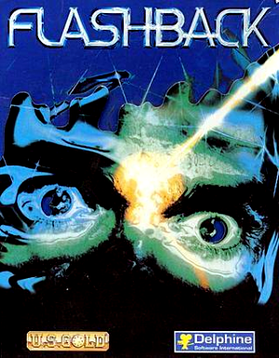
Flashback, released as Flashback: The Quest for Identity in the United States, is a 1992 science fiction cinematic platform game developed by Delphine Software of France and published by U.S. Gold in the United States and Europe, and Sunsoft in Japan.
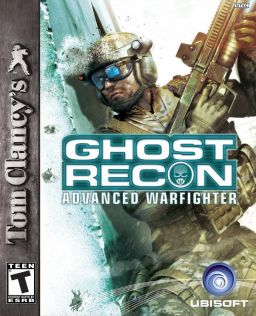
Tom Clancy's Ghost Recon Advanced Warfighter (GRAW) is a 2006 tactical shooter video game developed and published by Ubisoft. It was released for the Xbox 360, Xbox, PlayStation 2 and Microsoft Windows. As in previous Ghost Recon games, players command their team while neutralizing hostile forces and completing various mission objectives. These objectives can range from escorting friendly units across the map to rescuing hostages or taking out enemy artillery.
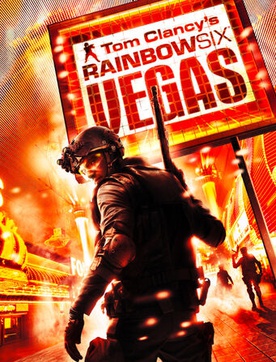
Tom Clancy's Rainbow Six: Vegas is the sixth game in the Rainbow Six series of video games. It was released in November 2006 for the Xbox 360, December 2006 for Windows, and in June 2007 for the PlayStation 3 and PlayStation Portable. The game's storyline follows a new team that is dispatched to Las Vegas, Nevada to defeat international terrorist Irena Morales and her army of mercenaries that are repeatedly attacking key locations in the city. A sequel developed by Ubisoft Montreal was released on Xbox 360, and PlayStation 3 consoles in March 2008 and on PC in April 2008. The game is also playable on Xbox Series X with online features still available.

Elements of Destruction is a video game developed by Frozen Codebase and Black Lantern Studios for Windows, Nintendo DS and Xbox 360.
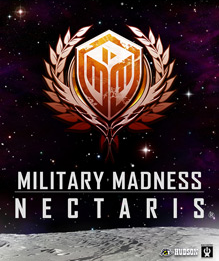
Military Madness: Nectaris is a turn-based strategy game developed for WiiWare, Xbox Live Arcade and PlayStation Network by Hudson Soft. It is the latest game in the Nectaris series, and an enhanced remake of the first game.

Alien Breed: Evolution is an isometric shooter game in Team17's Alien Breed series and is the first title in the series since 1996. It was released for the Xbox 360 on 16 December 2009. An updated version called Alien Breed: Impact was released for Microsoft Windows and PlayStation 3 in the following year. It was followed by Alien Breed 2: Assault released in September 2010.

Hard Corps: Uprising is a run and gun video game developed by Arc System Works and published by Konami for the Xbox 360 and the PlayStation 3. The game was released digitally on Xbox Live Arcade on February 16, 2011 and on the PlayStation Network in March 2011. In Hard Corps: Uprising, the player assumes the role of an elite soldier simply called Bahamut, along with other main characters. Konami has added three additional player characters via downloadable content.

Alien Breed 2: Assault is a video game in Team17's Alien Breed series and is the second new title in the series since 1996 after Alien Breed Evolution. It was released on Steam, Xbox Live Arcade, and PlayStation Network in 2010. The follow-up Alien Breed 3: Descent was released on 17 November 2010.

Apache: Air Assault is a combat flight simulator video game for Microsoft Windows, PlayStation 3 and Xbox 360. It was developed by then-Russian developer Gaijin Entertainment, which is most famous for its World War II MMO-game War Thunder and published by Activision.
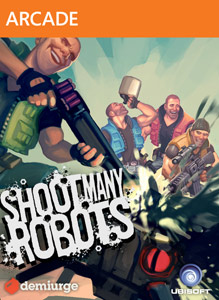
Shoot Many Robots is a video game developed by Demiurge Studios and published by Ubisoft for Xbox Live Arcade, PlayStation Network, and Microsoft Windows via Steam. Shoot Many Robots was released in March 2012 for XBLA and PSN, and a month later for Steam. The XBLA version received mixed reviews–a Metacritic score of 67–while other versions received too little attention to result in a meaningful rating.

Choplifter HD is a video game developed by inXile Entertainment and released in 2012-2013. It is a 3D polygonal remake of the 1982 game Choplifter by Dan Gorlin. inXile hired Gorlin to serve as a design consultant for the game. As in the original game, players fly missions in a helicopter, defeating enemies and rescuing people. Originally released for Windows, Xbox 360 and PlayStation 3, the game was subsequently ported to the Ouya as well as Android devices. Choplifter HD was lauded for being true to the original, retaining the gameplay the series was known for, but was criticized for its high level of difficulty.

Burnout Crash! is a downloadable action racing video game in the Burnout series. It is developed by Criterion Games and published by Electronic Arts for PlayStation 3, Xbox 360, iOS via PlayStation Network, Xbox Live Arcade, and iTunes App Store.

Alien Breed 3: Descent is the sequel to Alien Breed 2: Assault and is the third installment of the episodic remake of the Alien Breed series.

Capsized is a science fiction-themed platform game with run and gun mechanics. It was developed by Alientrap. Capsized was released for Microsoft Windows on April 29, 2011, on Steam. The iOS version, called Capsized+, was available February 13, 2013, and published by IndiePub. The soundtrack is provided by Solar Fields; the ambient electronic music is from his 2009 album Movements. The game was also released for Xbox Live Arcade on July 5, 2013, and was supposed to be released at a later time for the PlayStation 3's PlayStation Network, but somehow got canceled.
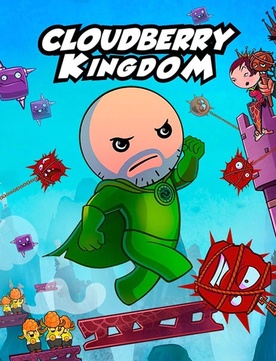
Cloudberry Kingdom is a platform game created by Pwnee Studios. The game uses a set of algorithms developed by Jordan Fisher to create procedurally generated levels that can be adaptive to player skill level, in game character abilities, and alteration of game physics.

Marvel Avengers: Battle for Earth is a video game developed by Ubisoft Quebec and published by Ubisoft for the Xbox 360 and the Wii U. The game is heavily based on the "Secret Invasion" storyline in Marvel comic books. The game was announced after the cancellation of the original The Avengers game based on the 2012 film of the same name, being developed by THQ. Battle for Earth was released in North America on October 30, 2012 for the Xbox 360, followed by the Wii U version on December 4. It was the first and currently only Marvel video game to be published by Ubisoft.
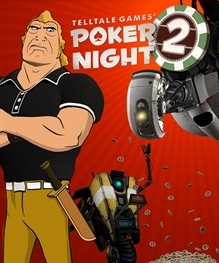
Poker Night 2 is a poker video game developed by Telltale Games. It is the sequel to Poker Night at the Inventory and, like its predecessor, features characters from different franchises. The game was released for Steam, PlayStation Network and Xbox Live Arcade in April 2013, with an iOS version released the following month. Due to expiring licenses, the game was pulled from sale in September 2018.

Spartacus Legends was a free-to-play video game based on the Starz television series Spartacus. Developed by Kung Fu Factory and published by Ubisoft, Spartacus Legends was released on PlayStation Network and Xbox Live in 2013. On December 22, 2015, Spartacus Legends was discontinued.

Castle of Illusion Starring Mickey Mouse is a 2013 2.5D platform game developed by Sega Studios Australia and published by Sega. The game is a remake of the original 1990 Sega Genesis/Sega Mega Drive video game of the same name, which was the first title in the Illusion series of Mickey Mouse video games. The game was released on PlayStation 3, Windows and Xbox 360, in September 2013, and later for iOS, Windows Phone, Android and OS X.

How to Survive is a video game developed by French studio Eko Software and published by 505 Games. It was released in 2013 for Xbox 360, Microsoft Windows, and PlayStation 3; in June 2014 for Wii U's Nintendo eShop; and in 2014 for PlayStation 4 and Xbox One as How to Survive: Storm Warning Edition.




















